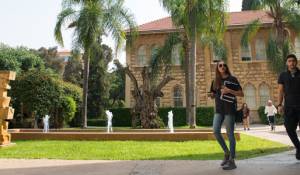@info91
Yes, male engineers from India have a tougher time, since there is so much of supply. I attended MBA fair in 2013. Back then Southern Methodist University (SMU - Cox) said that their average GMAT was 625, but their expected average GMAT for Indians was 695.
Regardless, most B schools admission teams desire to draft a diverse class profile. With your credentials - Australian, female, work experience in Middle east and a 670 GMAT score you'll be a strong candidate of several B schools.
Getting entry into Marketing roles is a bit tougher for international students since they lack the know how of target culture, but the trend I observed during my MBA and recruitment process was that Marketing Analyst roles are hot in US. Several companies desire people with MBA, experience, and their ability to use marketing tools - Marketo, HubSpot etc. Experience with analytical/bigdata tools - Minitab, R, etc. is also desirable for such roles.
Canada: I have heard from my friends there that most jobs are either concentrated in Greater Toronto Area or Alberta province (lot of mining/energy companies - looking for people who are willing to work there~~ cold).
When I looked at B schools back in 2010-2013 time frame, here is my list of schools in that order
1) University of Toronto - Rotman
2) McGill
3) Ivey
I prefer a 2 year MBA program. Students in Ivey tend to go into Consulting roles while Rotman graduates more students in Finance (I might be wrong, please double check this).
US: US is a much - much bigger economy than Canada, more job opportunities. Getting a job in US is tough, (not that its a piece of cake in UK/Canada). In any of the countries US/UK/Canada international students have to justify to the companies that they are worth the investment over other equally qualified local candidates. Then there are the legal issues.
Canada has the most generous post MBA work permit (2 years + 1 year extension). Last I heard that UK Tier 2 visa was difficult to get - I think Duncan will be the best person to comment on that.
US has 1 year OPT post MBA, you need to find some employment in 90 days after graduation else you need to go back. The work around is that most students who don't get jobs within that duration, tend to sign up for volunteer work or agree to work in any company without pay. The rule doesnt state that you need to paid. Your work in OPT must be in line with your MBA degree.
Within that OPT period (1 year) international students need to find an employer who is willing to sponsor for an H1B. Finding that agreeable employer is hard enough - but not impossible. Depends upon the skill set they are looking for, and if we have those.
The tricky part comes afterwards. Last few years the cap on H1B is 65,000 and additional 20,000 for advanced degree holders from US. Within that 20,000 there will be several MS students having STEM OPT (valid for 29 months).
So overall there are 85,000 H1B / year. a little less than 85,000 since US has treaties with Singapore, Chile. But for all calculation purpose lets consider 85,000.
Last year 233,000 petitions were filled for 85,000 (USCIS doesnt disclose the number of Advanced degree holder petition and ---lets say normal petition) [ Normal petition is not to be confused with Regular processing- it will come later)
For the lottery conducted in 2015, There was some ~30% chance of getting picked in the lottery for normal petition. ~50% chance for advanced degree holders - or so many websites claimed.
For normal petition - If your petition gets selected in lottery, then it will be processed - During processing it can be approved (H1B), Rejected (H1B denied) or On hold (Request for Evidence "RFE" - requesting more documents)
For advanced degree holder petition - You need to have graduated before filing the petition (1st April of that year). So if you get a job in Feb 2015 and your company is filing for your H1B in 2015 (On 1st April 2015) and you are still in school (Most US school graduates their students in May). you'll still file under normal petition and not advanced degree.
Anyhow, people filing in AD quota get two chances, First, to be selected in that 20,000 quota - if not, then their petition goes into the normal quota of 65,000. If they don't get picked in that one too----then its game over for that year, you may apply next year if your OPT is still valid.
All this is not meant to scare you - or anyone else but provide enough info to make an informed decision and have a Plan B,C,D ready. So in US there are more jobs and the job market / economy is going strong but then again at the end of it everything boils down to luck in the H1B lottery.
Canada - is a much smaller job market, ROI might be longer than US.
UK - They went tight on immigration few years back. Indian applicants declined for UK MBA and increased for Canada MBA and Australia MBA. Not sure if there are any exceptions in UK immigration system for Australian citizens - given the commonwealth history.
P.S - I am not a consultant or an expert like many here, I just graduated from MBA from College of William and Mary - in US. when I was in India, my target B schools were Canadian because of easier work permit. But one winter in DC gave me a reality check. Up there is cold - really cold - snowy cold. Cold isn't for me, I cannot imagine myself even in NY/Boston cold.
Coldness: Alberta > Toronto/Montreal > Boston > NY > Philadelphia > DC > California > Texas/Florida.
Good luck!




